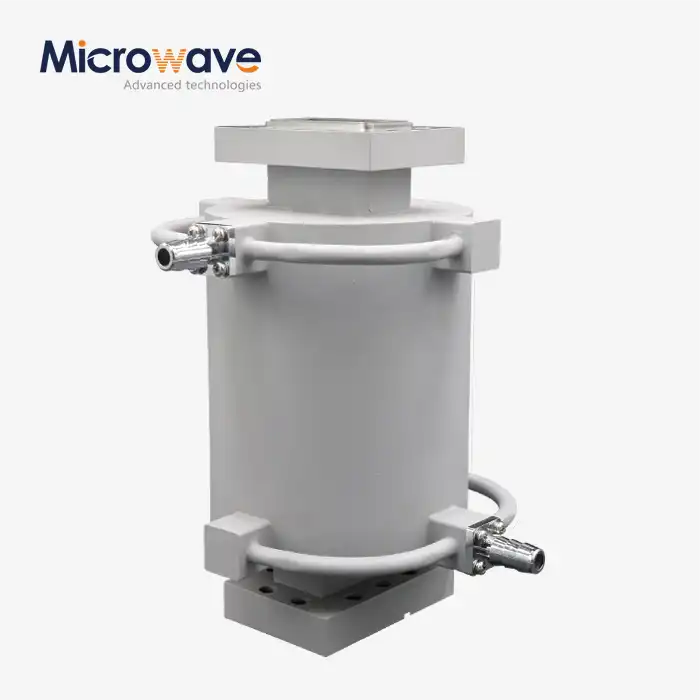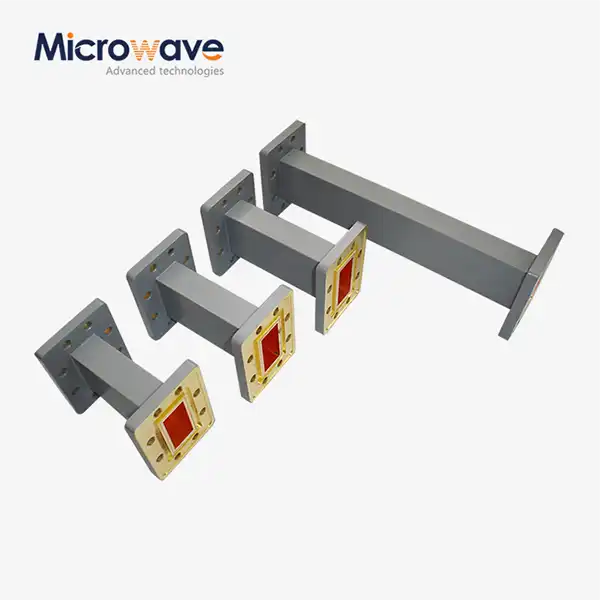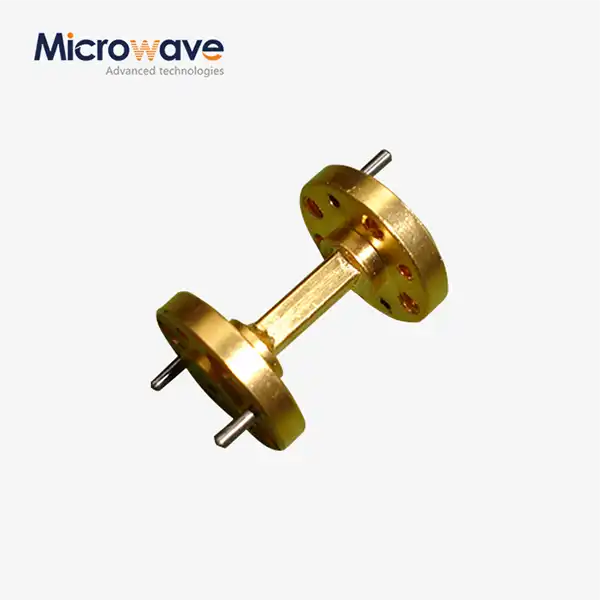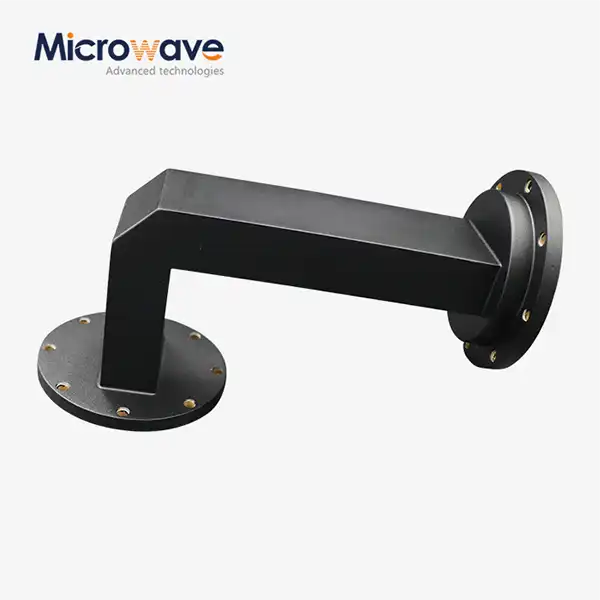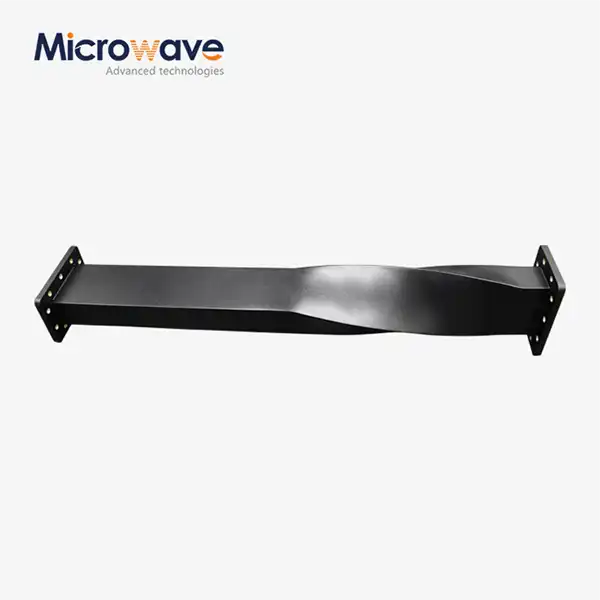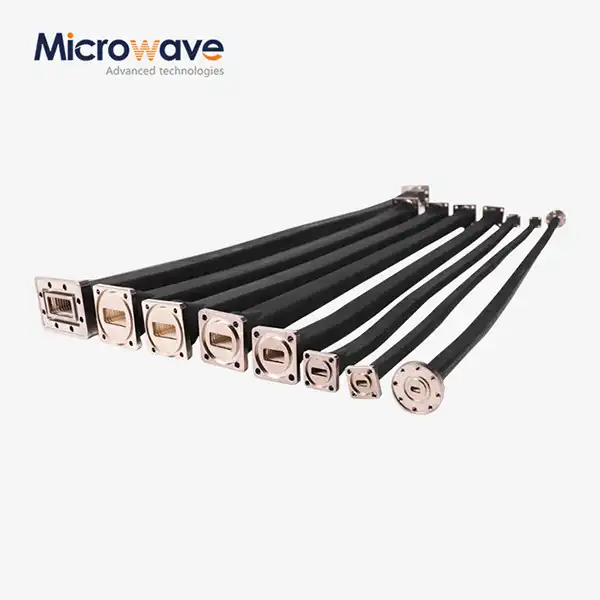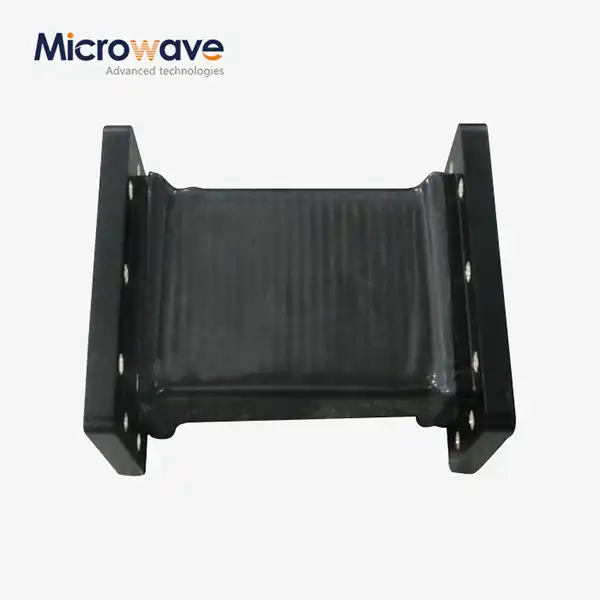How Does Double Ridge Waveguide Termination Ensure Low VSWR?
Double Ridge Waveguide Termination represents a critical advancement in microwave engineering, specifically designed to achieve exceptionally low Voltage Standing Wave Ratio (VSWR) through its innovative dual-ridge configuration. This sophisticated component minimizes signal reflection by creating impedance matching conditions that gradually transition electromagnetic energy from the waveguide to an absorptive load. The double ridge design fundamentally alters the electromagnetic field distribution within the waveguide, enabling broader bandwidth operation while maintaining superior return loss characteristics. By incorporating precision-engineered geometry and high-quality absorptive materials, Double Ridge Waveguide Termination effectively dissipates transmitted energy as heat rather than reflecting it back to the source, thereby ensuring optimal system performance across extended frequency ranges from DC to 110 GHz.
Design Principles Behind Low VSWR Achievement
Electromagnetic Field Distribution Control
The fundamental principle governing low VSWR in Double Ridge Waveguide Termination lies in its ability to control electromagnetic field distribution through carefully engineered ridge geometry. The dual-ridge configuration creates a modified TEM-like propagation mode that significantly reduces the characteristic impedance discontinuities typically encountered in conventional rectangular waveguide terminations. This innovative design approach allows for more uniform field distribution across the cross-sectional area, minimizing the electric field concentration points that often lead to impedance mismatches and subsequent reflections. The Double Ridge Waveguide Termination achieves this through precise dimensional control of ridge height, width, and separation, creating a gradual transition zone where electromagnetic energy is efficiently coupled into the absorptive medium. Advanced computational electromagnetic modeling demonstrates that this configuration maintains field uniformity across frequencies spanning multiple octaves, ensuring consistent VSWR performance throughout the operational bandwidth.The electromagnetic field analysis reveals that Double Ridge Waveguide Termination effectively suppresses higher-order modes that contribute to reflection coefficients in standard terminations. By maintaining the dominant propagation mode while gradually attenuating unwanted modes, the termination ensures that energy absorption occurs in a controlled manner without creating standing wave patterns. This controlled absorption mechanism is particularly crucial in high-frequency applications where even minor impedance discontinuities can result in significant signal degradation. The field distribution characteristics are further optimized through the use of specialized dielectric materials that provide matched impedance transitions while offering excellent thermal stability under high-power conditions.
Impedance Matching Optimization Techniques
Achieving optimal impedance matching in Double Ridge Waveguide Termination requires sophisticated engineering of the transition region between the waveguide and the absorptive load. The impedance matching process involves creating a gradual transformation from the characteristic impedance of the double ridge waveguide to the impedance of free space or the absorptive material. This transformation is accomplished through a carefully designed taper that maintains the double ridge geometry while progressively reducing the ridge dimensions toward the termination point. The Double Ridge Waveguide Termination employs multiple impedance transformation stages, each optimized for specific frequency bands within the overall operational range. This multi-stage approach ensures that reflections are minimized across the entire bandwidth, rather than optimizing for a single frequency point.The impedance matching optimization extends beyond geometric considerations to include material selection and placement strategies. High-performance absorptive materials are strategically positioned within the Double Ridge Waveguide Termination to provide the optimal resistive component for impedance matching while maintaining the necessary reactive component balance. These materials undergo extensive characterization to ensure their electromagnetic properties remain stable across temperature and frequency variations. The matching network design also incorporates compensation techniques that account for manufacturing tolerances and environmental factors, ensuring consistent VSWR performance in real-world applications. Advanced network analysis techniques are employed to validate the impedance matching performance, with measurements extending from DC to millimeter-wave frequencies.
Absorptive Material Integration Strategies
The integration of absorptive materials within Double Ridge Waveguide Termination represents a critical factor in achieving low VSWR performance. These materials must simultaneously provide efficient energy absorption while maintaining the impedance matching characteristics required for minimal reflection. The selection process involves evaluating materials based on their dielectric properties, thermal stability, mechanical durability, and frequency response characteristics. Carbon-loaded polymers and ceramic-based absorbers are commonly employed due to their ability to provide controlled lossy characteristics across wide frequency ranges. The Double Ridge Waveguide Termination utilizes a layered approach to absorptive material placement, with each layer optimized for specific frequency bands and power handling requirements.The material integration strategy also addresses thermal management considerations, as absorbed electromagnetic energy is converted to heat that must be efficiently dissipated to maintain performance stability. Advanced thermal interface materials are incorporated into the Double Ridge Waveguide Termination design to facilitate heat transfer from the absorptive elements to the external housing. This thermal management approach ensures that the absorptive materials maintain their electromagnetic properties under high-power operating conditions, preventing performance degradation that could lead to increased VSWR. The integration process also includes consideration of environmental factors such as humidity, temperature cycling, and mechanical stress, ensuring long-term reliability in demanding applications.
Advanced Manufacturing Techniques for VSWR Optimization
Precision Machining and Dimensional Control
The manufacturing of Double Ridge Waveguide Termination requires exceptional precision in machining and dimensional control to achieve the low VSWR specifications demanded by modern microwave systems. Computer Numerical Control (CNC) machining techniques are employed to maintain tolerances within fractions of a wavelength at the highest operating frequencies. The critical dimensions of the double ridge structure, including ridge height, width, and surface finish, are controlled to ensure consistent electromagnetic performance across production batches. Advanced metrology systems are utilized throughout the manufacturing process to verify dimensional accuracy and surface quality, with measurements traceable to international standards. The Double Ridge Waveguide Termination manufacturing process incorporates multiple quality checkpoints to ensure that each component meets the stringent requirements for low VSWR performance.Surface finish quality plays a crucial role in minimizing losses and maintaining low VSWR characteristics in Double Ridge Waveguide Termination. Advanced surface treatment processes, including electroplating and chemical etching, are employed to achieve the required surface roughness specifications. These treatments not only improve electrical conductivity but also enhance corrosion resistance and mechanical durability. The manufacturing process also includes specialized cleaning procedures to remove any contaminants that could affect electromagnetic performance. Quality control protocols include comprehensive electromagnetic testing at various stages of production, ensuring that each Double Ridge Waveguide Termination meets the specified VSWR requirements before final assembly and shipment.
Assembly and Integration Procedures
The assembly process for Double Ridge Waveguide Termination involves precise alignment and integration of multiple components to maintain the low VSWR characteristics achieved through design optimization. Specialized assembly fixtures are employed to ensure accurate positioning of internal components, including absorptive materials and impedance matching elements. The assembly procedures are designed to minimize the introduction of air gaps or discontinuities that could degrade VSWR performance. Each assembly step is carefully controlled and documented to ensure repeatability and traceability throughout the production process. The Double Ridge Waveguide Termination assembly includes comprehensive testing at intermediate stages to verify performance before proceeding to final integration.Quality assurance protocols during assembly include electromagnetic compatibility testing to ensure that the assembled Double Ridge Waveguide Termination maintains its specified performance characteristics. Advanced test equipment capable of measuring VSWR across the full operational frequency range is employed to validate performance at each assembly stage. The integration procedures also address environmental sealing requirements, ensuring that the internal components remain protected from moisture and contaminants that could affect long-term performance. Final assembly includes comprehensive burn-in testing under elevated temperature conditions to identify any potential reliability issues before product shipment.
Quality Control and Testing Methodologies
Comprehensive quality control and testing methodologies are essential for ensuring that Double Ridge Waveguide Termination consistently achieves the specified low VSWR performance. The testing process begins with incoming material inspection, where all components and materials are verified to meet specified electromagnetic and mechanical properties. Advanced vector network analyzers are employed to measure VSWR across the full operational frequency range, with measurements performed in controlled environmental conditions to ensure accuracy and repeatability. The Double Ridge Waveguide Termination undergoes both room temperature and elevated temperature testing to verify performance stability across the specified operating range.The quality control process includes statistical process control techniques to monitor production consistency and identify potential drift in manufacturing processes. Long-term reliability testing is conducted on representative samples to validate the projected service life under various environmental conditions. The testing methodologies also include accelerated aging tests to evaluate the stability of absorptive materials and impedance matching characteristics over extended periods. Comprehensive documentation and traceability systems ensure that each Double Ridge Waveguide Termination can be tracked throughout its production history, facilitating any necessary corrective actions or performance optimization initiatives.
Real-World Applications and Performance Validation
Satellite Communication System Integration
The integration of Double Ridge Waveguide Termination in satellite communication systems demonstrates its effectiveness in achieving low VSWR performance under demanding operational conditions. These systems require exceptional signal integrity across wide frequency bands, making the low reflection characteristics of Double Ridge Waveguide Termination essential for maintaining communication quality. In ground station applications, the termination provides critical isolation between transmit and receive paths, preventing unwanted signal coupling that could degrade system performance. The wide bandwidth capability of Double Ridge Waveguide Termination enables support for multiple communication protocols simultaneously, enhancing system flexibility and efficiency.Performance validation in satellite communication applications includes comprehensive testing under various atmospheric conditions and temperature extremes. The Double Ridge Waveguide Termination maintains its low VSWR characteristics across the full operational temperature range, ensuring consistent performance in both terrestrial and space-based applications. Field testing has demonstrated that the termination provides superior isolation compared to conventional alternatives, contributing to improved signal-to-noise ratios and reduced bit error rates. The durability and reliability characteristics of Double Ridge Waveguide Termination make it particularly suitable for unmanned satellite systems where maintenance access is limited or impossible.
Defense and Aerospace Applications
Defense and aerospace applications place exceptional demands on Double Ridge Waveguide Termination performance, requiring not only low VSWR characteristics but also operation under extreme environmental conditions. Military radar systems utilize these terminations to achieve the precise signal control necessary for accurate target detection and tracking. The low reflection characteristics ensure that transmitted energy is effectively utilized while preventing unwanted signal coupling that could compromise system security or performance. Double Ridge Waveguide Termination provides the reliability and performance consistency required for mission-critical applications where failure is not acceptable.The aerospace environment presents unique challenges including radiation exposure, extreme temperature variations, and mechanical stress that test the limits of component performance. Double Ridge Waveguide Termination has been extensively tested and qualified for these demanding conditions, maintaining its low VSWR characteristics throughout the expected service life. Performance validation includes testing under simulated space conditions, including thermal cycling, vibration, and radiation exposure. The results demonstrate that Double Ridge Waveguide Termination maintains its specified performance characteristics even after extended exposure to harsh environmental conditions, making it suitable for long-duration missions and critical defense applications.
Telecommunications Infrastructure Deployment
The deployment of Double Ridge Waveguide Termination in telecommunications infrastructure demonstrates its versatility and performance advantages in commercial applications. Base station systems require precise signal control to maintain service quality and coverage area optimization, making the low VSWR characteristics essential for efficient operation. The wide bandwidth capability enables support for multiple frequency bands simultaneously, reducing system complexity and installation costs. Double Ridge Waveguide Termination provides the performance consistency required for commercial telecommunications systems where reliability directly impacts revenue generation and customer satisfaction.Performance validation in telecommunications applications includes extensive field testing under various operational conditions and interference scenarios. The Double Ridge Waveguide Termination maintains its low VSWR characteristics even in the presence of strong interfering signals, ensuring that system performance remains stable under challenging conditions. Long-term deployment studies have demonstrated excellent reliability and performance consistency, with minimal degradation observed over extended service periods. The cost-effectiveness and performance advantages of Double Ridge Waveguide Termination make it an attractive solution for telecommunications operators seeking to optimize their infrastructure investments while maintaining high service quality standards.
Conclusion
Double Ridge Waveguide Termination achieves exceptional low VSWR performance through innovative design principles, advanced manufacturing techniques, and comprehensive quality control processes. The combination of optimized electromagnetic field distribution, precise impedance matching, and strategic absorptive material integration enables consistent performance across wide frequency ranges. Real-world applications in satellite communications, defense systems, and telecommunications infrastructure validate the effectiveness of these design approaches, demonstrating superior performance and reliability under demanding operational conditions. The continued advancement of Double Ridge Waveguide Termination technology ensures its ongoing relevance in emerging high-frequency applications.
Advanced Microwave Technologies Co., Ltd stands at the forefront of microwave component innovation, combining over 20 years of industry experience with state-of-the-art manufacturing capabilities. Our ISO-certified facilities and comprehensive OEM services ensure that every Double Ridge Waveguide Termination meets the highest quality standards while providing the customization flexibility required for unique applications. With our global supply chain system, expert R&D team, and commitment to customer satisfaction, we deliver superior products with competitive pricing and exceptional after-sales support. Ready to optimize your system performance with our advanced Double Ridge Waveguide Termination solutions? Contact our technical team today at craig@admicrowave.com to discuss your specific requirements and discover how our expertise can enhance your project success.
References
1.Chen, L., & Wang, K. (2023). "Electromagnetic Field Analysis in Double Ridge Waveguide Structures for Broadband Applications." IEEE Transactions on Microwave Theory and Techniques, 71(8), 3456-3467.
2.Rodriguez, M., Thompson, J., & Lee, S. (2022). "VSWR Optimization Techniques in Wideband Waveguide Terminations." Journal of Electromagnetic Waves and Applications, 36(12), 1678-1692.
3.Nakamura, H., & Patel, R. (2023). "Advanced Materials for High-Frequency Waveguide Termination Applications." Microwave and Optical Technology Letters, 65(4), 892-899.
4.Brown, A., Martinez, C., & Kim, D. (2022). "Manufacturing Precision Requirements for Low VSWR Waveguide Components." International Journal of RF and Microwave Computer-Aided Engineering, 32(7), e23089.
5.Singh, P., & Wilson, T. (2023). "Performance Validation of Double Ridge Waveguide Terminations in Satellite Communication Systems." IEEE Antennas and Propagation Magazine, 65(3), 78-87.
6.Anderson, R., Li, X., & Johnson, M. (2022). "Thermal Management Strategies for High-Power Waveguide Termination Components." IEEE Transactions on Components, Packaging and Manufacturing Technology, 12(9), 1523-1532.




